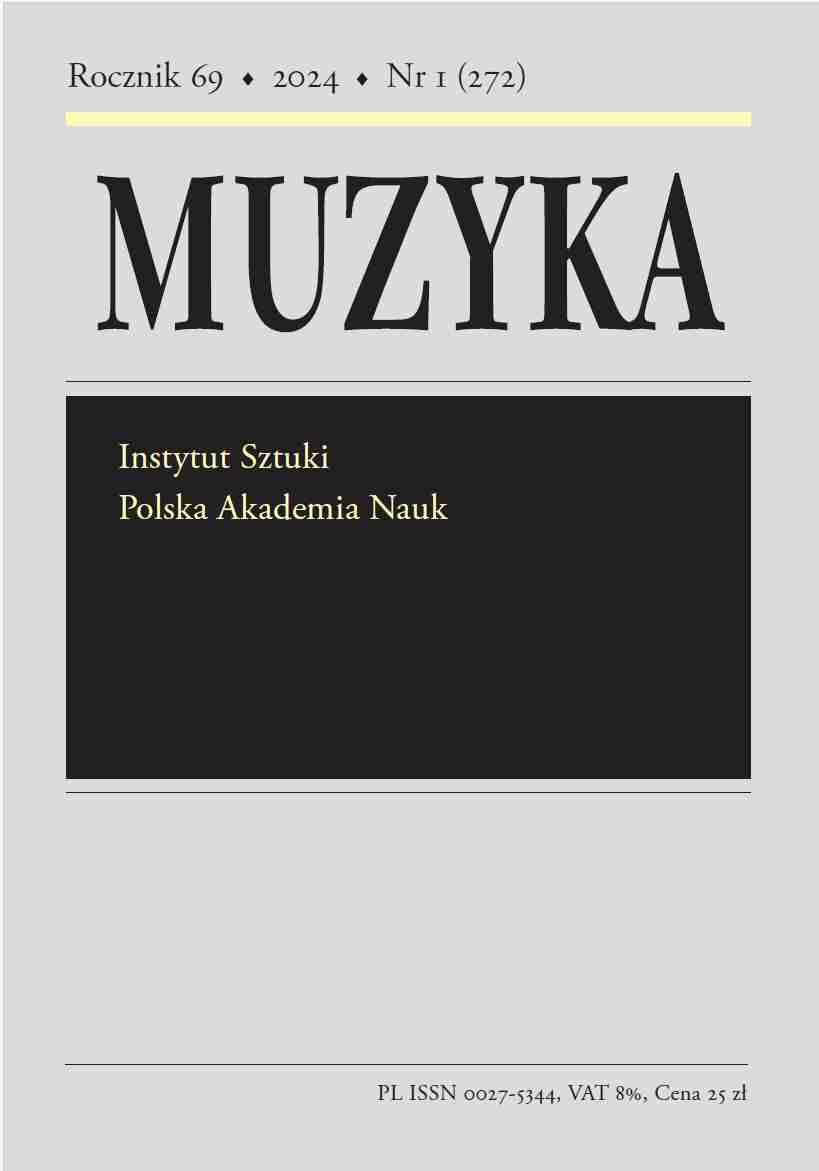Manuscript RC 4 from the Silesian Museum in Opava and an unknown song by Petrus Wilhelmi de Grudencz
Jan Ciglbauer
Charles University (Czechia)
https://orcid.org/0000-0001-6968-4613
Paweł Gancarczyk
Institute of Art, Polish Academy of Sciences (Poland)
https://orcid.org/0000-0001-7373-007X
Abstract
The library holdings of the Silesian Museum in Opava include the fifteenth-century manuscript RC 4, which has yet to be investigated by musicologists. In particular, no attention has been paid to the polyphonic repertoire it contains. The authors provide basic information about the manuscript, focusing on the two-part song Poligena exanimes. Based on the presence of the acrostic ‘Petrus’ and the song’s stylistic features, Poligena exanimes can be attributed to Petrus Wilhelmi de Grudencz (Piotr z Grudziądza). This song was written on the last gathering of the manuscript, which also contains two other works by this composer (Phebus ecclipsi tumuli and Predulcis eurus turbinis), dated on the basis of watermarks to around 1431–35. It is one of the earliest sources of the work of Petrus de Grudencz, written after the composer’s graduation from Cracow Academy (1430) and before he joined the court of Frederick III Habsburg (probably around 1440).
Apart from polyphony, the manuscript contains monophonic passions and lamentations, as well as one-part songs, in which – apart from Latin texts – German and Czech texts also appear (the erotic song Wsed diabel babie na pleczo). Such a mix of repertoire is characteristic of Latin schools and university colleges. Research into this source will continue.
Supporting Agencies
Authors
Paweł GancarczykInstitute of Art, Polish Academy of Sciences Poland
https://orcid.org/0000-0001-7373-007X
Statistics
Abstract views: 287PDF downloads: 152
License
Copyright (c) 2024 Jan Ciglbauer, Paweł Gancarczyk

This work is licensed under a Creative Commons Attribution 4.0 International License.
The author grants the publisher a royalty-free nonexclusive licence (CC BY 4.0) to use the article in Muzyka, retains full copyright, and agrees to identify the work as first having been published in "Muzyka" should it be published or used again (download licence agreement). By submitting an article the author agrees to make it available under CC BY 4.0 license.
Articles from 2018/1 to 2022/3 were published under a Creative Commons license CC BY-NC-ND 4.0. During this period the authors granted the publisher a royalty-free nonexclusive license (CC BY-ND 4.0) to use their article in "Muzyka", retained full copyright, and agreed to identify the work as first having been published in our journal should it be published or used again.
Most read articles by the same author(s)
- Paweł Gancarczyk, Kamil Watkowski, The Gdańsk version of the 15th-century polyphonic song 'Ihesus Christus nostra salus', and the Central European connection of that copy , Muzyka: Vol. 65 No. 2 (2020)
- Paweł Gancarczyk, Lenka Hlávková (17 VIII 1974‒21 XII 2023) , Muzyka: Vol. 69 No. 3 (2024)
- Paweł Gancarczyk, Johannes Tourout: Ascribed and Attributable Compositions in 15th-Century Sources from Central Europe. Wyd. Jaap van Benthem. T. I. Missa Mon oeil. Missa Groß Sehnen ich im Herzen trage. Utrecht 2015 , Muzyka: Vol. 61 No. 3 (2016)










